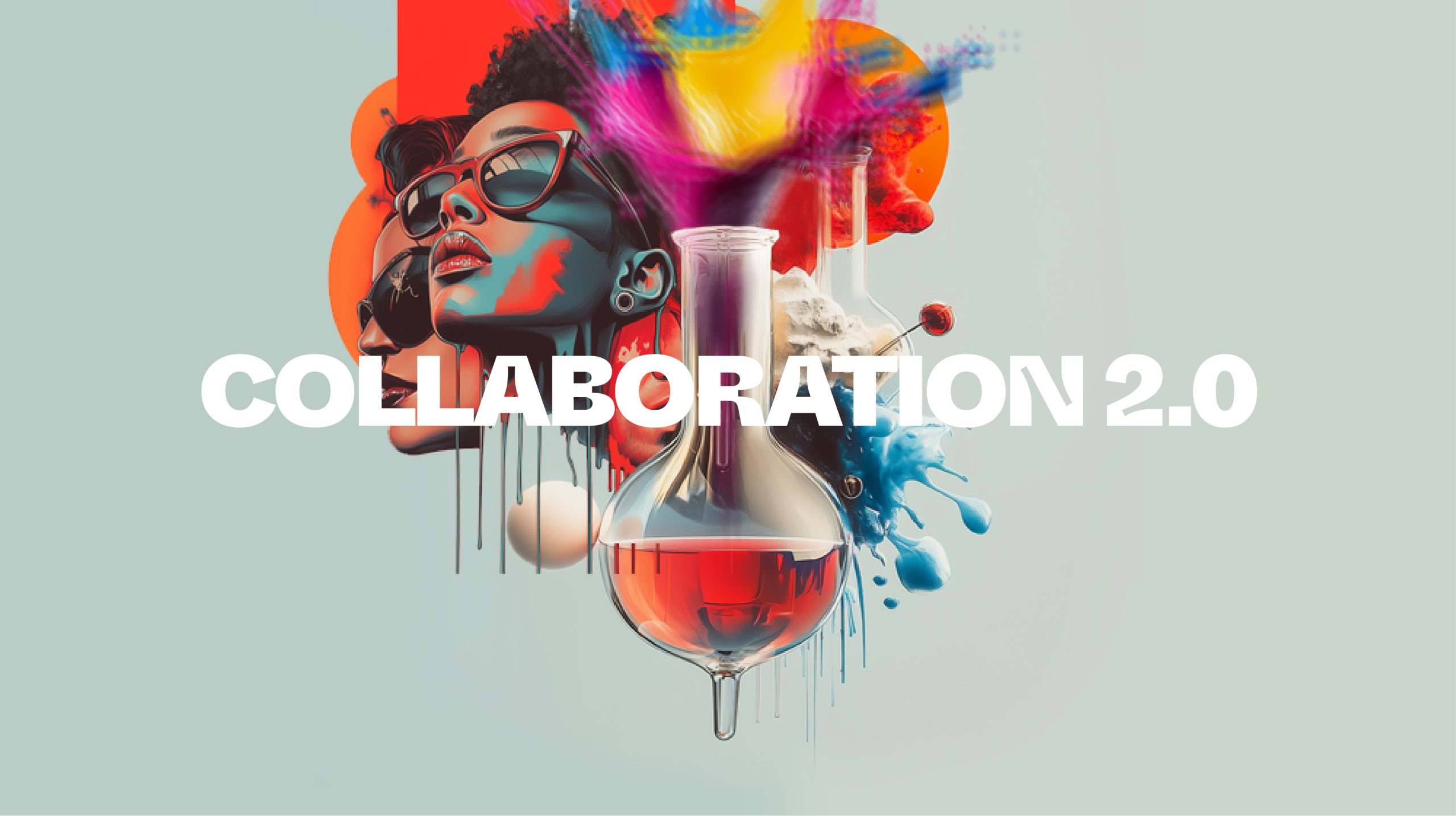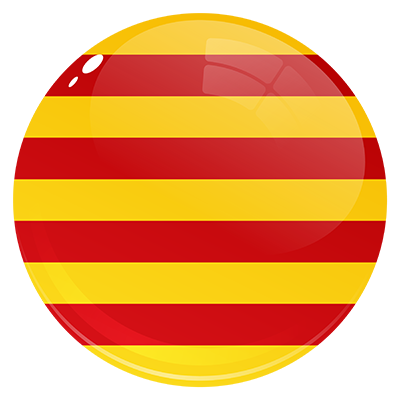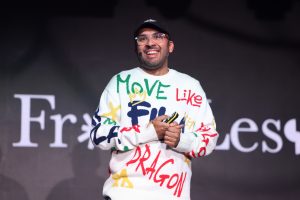
Collaboration 2.0: Six talking points on the new creative co-operation
Written by: Paul Cope, Managing Director at The Creative Lab, an independent branding and communication agency and Blend 2024 Creative Partner.
There have been, as you might expect, many millions of wise words written by plenty of terribly clever thinkers on the definition, principles and benefits of collaboration – the “process of two or more people, entities or organisations working together to complete a task or achieve a common goal”(1).
This is hardly surprising though. It’s commonly considered to be one of the main foundations underpinning human achievement. The secret sauce of rapid progress. In fact, it’s such an accepted input to success in creativity, sport, the arts, science… we sort of take it for granted. You might even argue there isn’t really even that much new to say about such a familiar behavioural construct. Here at The Creative Lab, we’re not so sure.
It was this almost throwaway quote about the power of collaboration from songwriter, singer, playwright, producer, film director and all-round creative genius, Lin-Manuel Miranda, which we found particularly inspiring: “The fun for me in collaboration is… working with other people just makes you smarter; that’s proven.”(2)
We think there’s some important stuff going on here. Miranda’s insight that collaboration “makes you smarter” implies it isn’t just a static tool to be switched on to help deliver certain tasks. It’s way more than that, particularly when applied to creativity. Collaboration is a key dynamic ingredient of ongoing improvement and therefore requires continuous monitoring, honest appraisal and frequent checks and balances to maintain its effectiveness. The nature and expectation of great collaboration, in other words, is always evolving. This raises a number of important questions…
What influences this evolution and how do we harness them? Is all creative collaboration born equal? Collaborate with whom and how, exactly? Can collaboration be made more accountable? What does truly effective collaboration actually look like?
In the spirit of opening up this important discussion, we’ve identified six talking points that touch on these questions and invite further scrutiny…
Talking point #1: The role of mindset
According to Stanford professor, Carol Dweck, author of ‘Mindset – The New Psychology of Success’: “Individuals who believe their talents can be developed have a growth mindset. They tend to achieve more than those with a more fixed mindset… [Fixed mindset triggers] make it harder for people to practice growth mindset thinking and behaviour, such as sharing information, collaborating, innovating, seeking feedback, or admitting errors.”(3)
It would seem, then, that being mentally prepared to do what’s needed to be better and do better work – both individually and as a group – is a pre-requisite for effective collaboration.
This has big implications for collaborative endeavours in general, as it implies that simply pitching up in a room with a bunch of people hoping to get something done can’t really be classified as ‘collaboration’.
Talking point #2: Like-minded thinkers vs diversity of thought
Much has been done over the past few years to create more diverse and inclusive work environments in the UK’s creative agencies and marketing departments. This is, of course, a very good thing. There’s plenty of work still to be done, but the overall trend is encouraging and evidence of ever more positive outcomes is revealing itself all the time.
That said, active representation of diverse ways of thinking – a.k.a. cognitive diversity – in collaborative environments is arguably lagging behind. Unconscious bias is still common and it’s not unusual to be told, like it’s a good thing, to “get on the same page”. Why is this important? Well, put simply, it’s far easier to collaborate with a group of people who all think like you. Easier, definitely, but almost certainly not better.
The group ‘Diversity for Social Impact’ put it nicely: “It’s just about letting people with opposing ideas to rub against each other until they can achieve a positive outcome. It’s about valuing how everyone thinks and encouraging them to express their thoughts.”(4)
Great minds, it would seem, don’t necessarily think alike.
Talking point #3: Is the beginning always the best place to start?
With multidisciplinary thinking and a diverse blend of skills and motivations increasingly common in creative endeavour, opportunities for collaborative chaos lurk around every corner. Accountability can quickly become blurred, dependencies ignored, prioritisation confused. No doubt we’ve all observed a well-meaning collaboration effort derailed by conflicting reputational, financial and cultural end-goals.
Setting and agreeing the desired outcomes up front – the all-important ‘Why’ – would certainly seem to be one important way of overcoming this common trap. According to project management gurus, Workpath: “If there is insufficient coordination when setting cross-team goals [at the start], it may result in teams working past each other and missing the goal altogether [later on].”(5)
Talking point #4: The hidden implications of embracing tech
It’s a given that the creative landscapes of the next few years will be epitomised by continuously evolving technology. This is all very exciting. As the traditional constraints of geography, time zones and responsiveness melt away, so an elegant ‘third space’ will emerge where seamless collaboration flourishes. Or will it?
This apparent digital nirvana seems to overlook one essential truth: creative collaboration is a fundamentally human endeavor. For the time being, at least. According to a recent global study on remote working by tech firm Barco, 37% of those surveyed said that, in spite of the digital tools put in place to help them, they found it harder to collaborate while working remotely, while 42% said it stifled their creativity (6). So while tech solutions will inevitably play a big part in ‘Collaboration 2.0’, the research suggests that simply delegating collaborative tasks to tech, using it to cut costs or bring an element of novelty is an error.
The tech, it seems, should be in the service of the creative and not the other way round.
Talking point #5: The ‘gift’ of creative thinking
It’s almost a cliché to suggest that creative people think different. It’s literally what makes them creative, right? It must be true, Apple told us. Here’s to the crazy ones and all that.
There seems little doubt that creative thinking is an essential component of effective collaboration. It has always brought varied and divergent ideas to what otherwise can be dominated by fairly humdrum, process-led procedural thinking (as touched upon in Talking Point 2). But the suggestion that only ‘creative people’ are capable of creative thinking in a collaborative context is certainly up for debate.
On the one hand, there are the devotees of Edward de Bono’s concept of lateral thinking. For them, “lateral thinking is a method of approaching a problem by deliberately forgoing obvious methods of reasoning… it requires one to consider a given issue from unlikely angles, uncovering innovative solutions as a result.”(7). In his famous paper, de Bono describes the four techniques that will enable creative thinkers to bring their A-game to the table.
On the other hand, the likes of psychology professor Robert W. Weisberg consider extraordinary creative thinking as being part of the ‘genius myth’ (11). Weisberg argues that the creative process takes place via a combination of logical thinking, trial and error, real-world wisdom and good old hard graft by people who have been drawn to – and have experience in – creative roles. All of which involve ‘ordinary thought processes’ rather than lateral thinking.
Whichever school of thought you tend towards, giving careful consideration to a suite of approaches and thought processes is probably most likely deliver the best possible output of your collaboration.
Talking point #6: The noble art of curation
Any well-run collaborative endeavor will almost certainly reveal one final challenge that will need to be confronted: how on earth to make sense of all the stuff the collaboration has generated? Throughout the process you’ll likely collate significantly more ideas, references, workshop outputs, innovative thinking, complete nonsense and feedback than you’ll ever need. Making sense of this joyous alchemy is not for the faint-hearted, but it’s likely to be the difference between success and outright chaos.
Creative curation – like so many types of simplification – is often a brutal act. Collaboration software wizards, Samepage, go further: “The best collaborators are diplomats. They know that relationships are built on mutual respect, and that being liked is not always the most important thing. [They realise] that building consensus and establishing buy-in are musts.”(8)
What does all this mean for the age-old art of creative collaboration as we move into an ever more uncertain, culturally ambiguous world? This passage from workplace simplicity experts, Kissflow, seems to set the direction of travel: “In the age of digital workplaces, globally distributed teams and remote work, new methods of collaboration take on a whole new meaning when it comes to business success. Better and more effective collaboration gives an organisation a huge advantage when it comes to brainstorming, value creation and equal opportunity… [therefore] the organisations that will succeed in this decade will be the ones who have managed to successfully fuse a digital culture with an agile workplace to best derive the benefits of new-age collaboration.”(1)
But what do you think? Have we missed anything? How do you deliver effective creative collaboration? We’d love to hear your thoughts on this multi-faceted, ever-changing topic.
We look forward to collaborating with you.
Sources:
- Digital Workspace: https://kissflow.com/digital-workplace/collaboration/what-is-collaboration/
- BrainyQuote: https://www.brainyquote.com/quotes/linmanuel_miranda_727797
- Harvard Business Review: https://hbr.org/2016/01/what-having-a-growth-mindset-actually-means
- Diversity For Social Impact: https://diversity.social/diversity-of-thought/#1-what-is-diversity-of-thought
- Workpath: https://www.workpath.com/magazine/alignment-cross-functional-teams
- Barco: https://www.barco.com/en/news/press-releases/employees-ready-to-return-to-the-office-want-to-see-a-redesign-for-better-hybrid-meetings.aspx
- Big Think: https://bigthink.com/neuropsych/lateral-thinking/
- Samepage: https://www.samepage.io/blog/10-top-qualities-great-collaborator
Blog Category
- PULSE
- News
- Press Release
- Q&A
Latest Blog
Permission to Play: Manon Dave on Creativity and the Power of Play
Manon Dave sharing his journey, philosophy on creativity, and an...
Read MoreOctober 2024: Gaza art installation confirmed
New Barcelona-based creative industry festival Blend is set to have...
Read MoreOctober 2024: GucciGhost to headline Blend
Exciting new Barcelona-based creative festival Blend set to showcase unseen...
Read MoreSeptember 2024: Creative industry backs new festival
Major global powerhouses Nike, Snapchat and Ogilvy have joined key...
Read More
 CA
CA
 ES
ES

